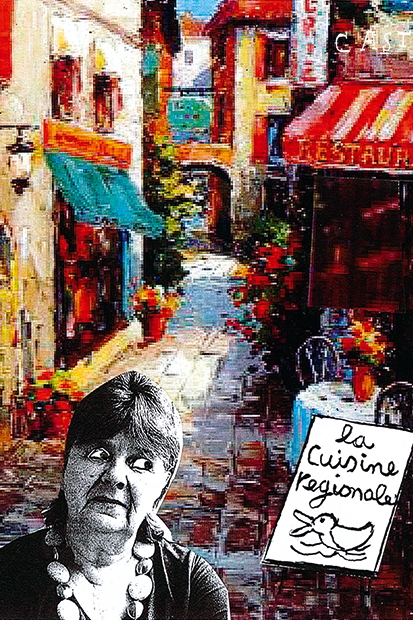An overnight stop on the Ile de Ré taken between the St Malo ferry and the Quercy, where we always spend June, reminds one how closely French history lives entangled with modern life. Sleek hotels, harbours full of private boats, overpriced gift and fashion boutiques are cheek by jowl with ancient monuments and fortifications, in streets of small stone houses so narrow that the ubiquitous bicycles barely get through. Amid the massed tourists here, they still cultivate vines, mine salt and grow potatoes to send over toute la France. The mussels and lobsters remind me of home in north Norfolk and the pretty cottages are freshly painted white with pale grey or soft green shutters. It feels oddly unreal, a film set of an island, and an Atlantic gale buffets the shoreline trees even in June, but many people live here all year round.
Typical of France’s eccentricities and problems all in one are the ten villages on the Ile de Ré with, naturally, ten separate tourist offices, none of which know anything whatsoever about the others. One mile away and it’s not their patch.
Further south, we encountered a perfect example of the overstaffed French public sector. It defied belief. The verges were being cut by a convoy of four huge machines. The first had its setting on high, to shave a little off the top, the second cut a notch down and so on to the last, which finished the job. Today, a municipal hedge-cutter was operating, with required a white van, rotating warning light atop, parked 50 yards away. This had employee number two in it, reading his newspaper. What was a country of small café and bar owners has seen hundreds of them close, because of the punitive taxes on private enterprise. The (English) man who tends the pool here, and is also a small jobbing builder, was paying 50 per cent tax on a modest income and had to work seven days a week to make it. He has shrunk his business and is helping his son build a house. I do not know if money changes hands but if so, it is all within the family. Several higher earners I knew here have left. If 50 per cent tax is bad, 79 per cent sees talent, enterprise and money draining from France, while vast numbers of public sector employees enjoy a 35-hour week and retire at 60. This is socialism in action. No wonder Sarkozy might return to the Elysée Palace.
It is an ill wind, though. The euro is so weak that shopping is cheap again — last fill of my two-litre car at home was £80, the first here, £50. Bottles of our favourite Crémant Brut cost £7 last year, £4.50 now. Talking of fizzy wine, Prosecco has become England’s favourite drink because the Italians saw a gap and jumped in. So why have the French not done the same with equally delicious Crémant? Lack of enterprise? Laziness? No, they want us to buy Champagne. French restaurants won’t sell Crémant for the same reason, so most people drink the house white.
‘Locally sourced’ makes my heart sink not because local is bad but because it fills menus to the exclusion of all else. Here every menu has ‘la cuisine regionale’ which is duck with everything, and then foie gras. As a non-practising vegetarian (I eat some meat, prefer veg) who loathes duck, I dine out on too many cabécou omelettes and salads. If the EU cared about animal welfare it would ban foie gras, the cruellest food on the planet. I would eat a lean steak but French chefs refuse to serve it well-done — it’s against their art or something. This year, though, we have discovered two English-owned restaurants offering lamb cutlets, burgers, pasta — a small blow in the war against duck. Maybe there are no vegetarians here because the markets offer a magnificent selection of vegetables but where they go afterwards is one of the mysteries of French life.
My goodness but they do thunderstorms well here! A lady crossing the road when her umbrella blew inside out, shouted to me over the roar, ‘C’est la tempête, Madam, la tempête!’ It was, too. Trees bent half over, the air was like soup and sulphurous, water flowed like a river. You could not see the other side of the valley through what looked like dense fog but was actually clouds of rain. The pack of hounds kennelled nearby, normally quiet except for five minutes before feeding time, were baying like those of the Baskervilles for almost an hour as the barometer fell. Of course the power went off. It was all very Wagnerian and the previous time I experienced anything like it was last year. In Hove.







Comments